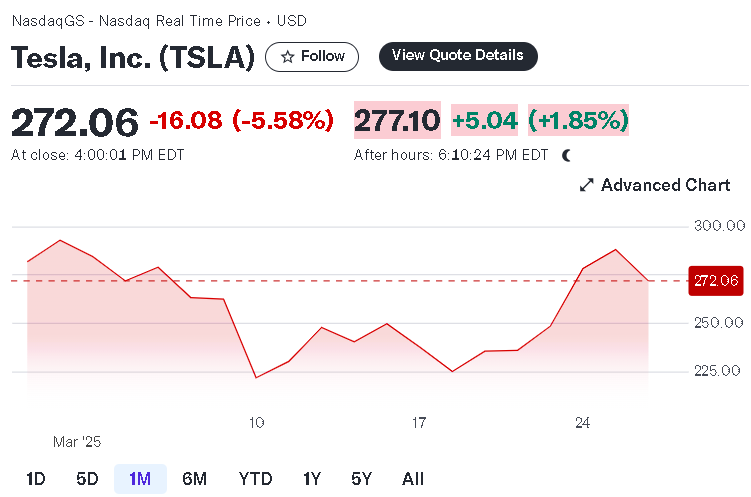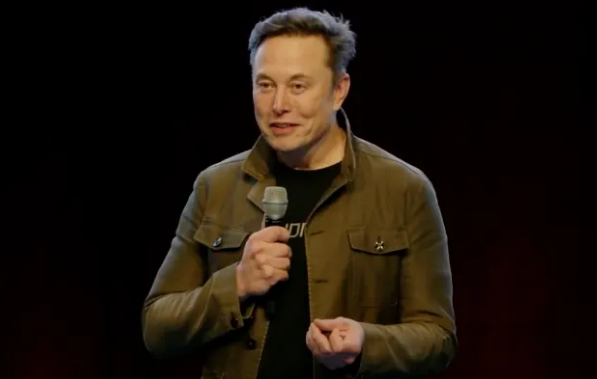Elon Musk, the charismatic yet controversial leader of Tesla (TSLA), has seemingly re-engaged with his electric vehicle company, sparking a significant rally in the stock price. This renewed presence follows a period where Musk’s attention appeared divided, particularly with his acquisition and transformation of social media platform X (formerly Twitter), a venture that has generated considerable political and brand baggage. The core question now is whether Musk can effectively steer Tesla towards his ambitious long-term vision – centered on robotaxis and humanoid robots, rather than solely relying on car sales – amidst the complexities of his public persona and its potential impact on the brand. While some investors view Tesla as a “faith-based” stock, heavily reliant on future promises, the interplay between Musk’s leadership, his broader activities, and the company’s trajectory remains a critical point of observation.

The narrative surrounding Tesla (TSLA) has taken another intriguing turn with the apparent re-emergence of its iconic leader, Elon Musk, at the forefront of the company’s operations. This shift in focus has been met with enthusiasm by investors, evidenced by a substantial 25% surge in Tesla’s stock value over the past week. A significant catalyst for this upward momentum was an all-hands meeting where Musk reportedly delivered a compelling message, reassuring shareholders and reinforcing his overarching vision for the electric vehicle giant. The sentiment emanating from this internal gathering suggests that Musk is decidedly “back in the building,” ready to shepherd Tesla into its next phase.
At the heart of Musk’s ambitions for Tesla lies a vision far exceeding the traditional scope of an automotive manufacturer. He envisions a rapid transformation of private transportation, fueled by a future fleet of millions of autonomous robotaxis and thousands of advanced humanoid robots. However, the realization of these ambitious dreams faces increasing headwinds, particularly as Musk’s attention has been significantly diverted to his endeavors in Washington and his controversial overhaul of social media.
Musk’s acquisition and subsequent transformation of Twitter into X, while a bold undertaking, carries different ramifications than navigating the complexities of a major automotive brand. His attempts to reshape the social media landscape have generated considerable political fallout and appear to have inadvertently tarnished the Tesla brand. As prominent Tesla bull Dan Ives aptly described it, this external activity has created a “brand tornado crisis moment” for the electric vehicle company.
Despite these challenges, signs of a potential resurgence are beginning to emerge. Staunch supporters of the company believe Musk is now finding a better equilibrium between his various commitments, including his involvement with the cryptocurrency Dogecoin, and his core responsibilities at Tesla. Furthermore, a renewed wave of interest from retail investors, breaking through a period of relative stagnation, underscores a defining characteristic of the stock: its ability to captivate and convince people that transformative developments are on the horizon.
As Nicholas Colas, co-founder of DataTrek Research, astutely noted in a recent client briefing, Tesla operates as a “faith-based” stock. While belief underpins the valuation of most equities, Tesla represents a particularly pure example of faith investing. A significant portion of its implied value is intrinsically linked to future endeavors and breakthroughs, rather than current or near-term financial performance. In Tesla’s case, this translates to the anticipated future earnings from its robotaxi program, rather than the present reality of declining electric vehicle sales in key markets such as the U.S., Europe, and now China.
Viewing the stock through this “faith-based” lens helps to contextualize why flagging sales figures in Tesla’s third-largest market have had a seemingly muted impact on its stock chart. This week’s rally also coincided with positive news regarding tariffs, providing a lift to the “Magnificent Seven” tech stocks. However, Tesla’s upward trajectory was particularly pronounced and continued into Tuesday, suggesting factors beyond broader market sentiment were at play.
It would be inaccurate to suggest that investors are entirely disregarding Tesla’s fundamental performance. Rather, the argument put forth by Tesla bulls and sympathetic observers is that the company’s core “fundamentals” are inextricably tied to the potential of its future technological advancements.
Consider the perspective of Cathie Wood, who recently articulated to colleagues why she believes Tesla’s stock could reach a staggering $2,600 within the next five years – essentially adding a zero to its current trading level. This ambitious thesis is overwhelmingly predicated on the success and widespread adoption of robotaxis, which Wood projects will constitute 90% of the company’s total value. If her vision proves accurate, then short-term fluctuations in European EV sales become a relatively minor concern.
It is easy to see how this reliance on “faith-based” investing can veer perilously close to blind trust. For many investors, the sentiment truly boils down to a simple conviction: “Musk, take the wheel.” What critics perceive as mere hype or gimmicks, the faithful interpret as the next chapter in Musk’s proven track record of disruptive innovation. When the stock price is on an upward trajectory, discerning the difference between genuine progress and unwavering belief can be challenging, and perhaps, in this unique case, the distinction is less significant than conventional analysis might suggest.
